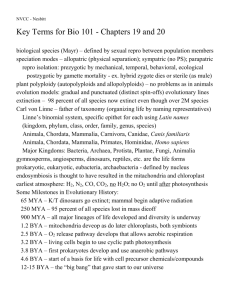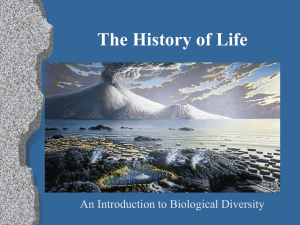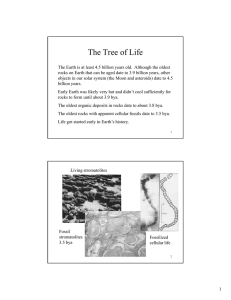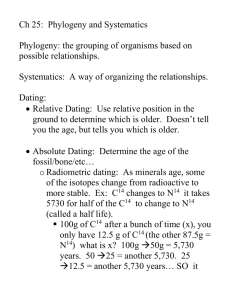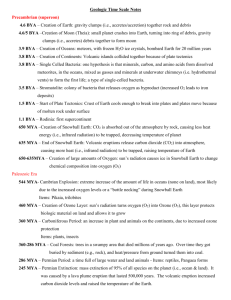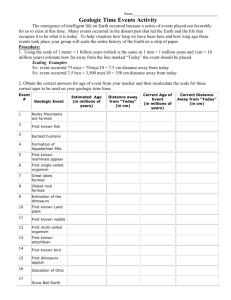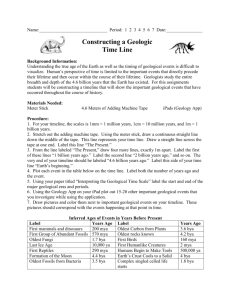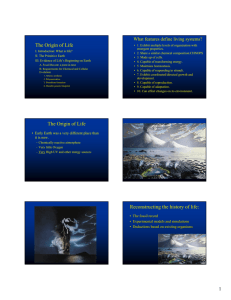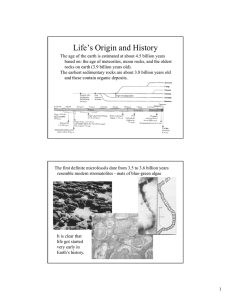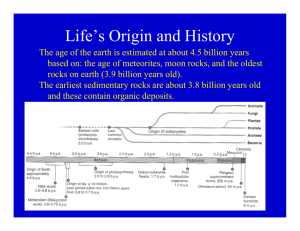UTKEEB464_Lecture1_History1_2015
advertisement
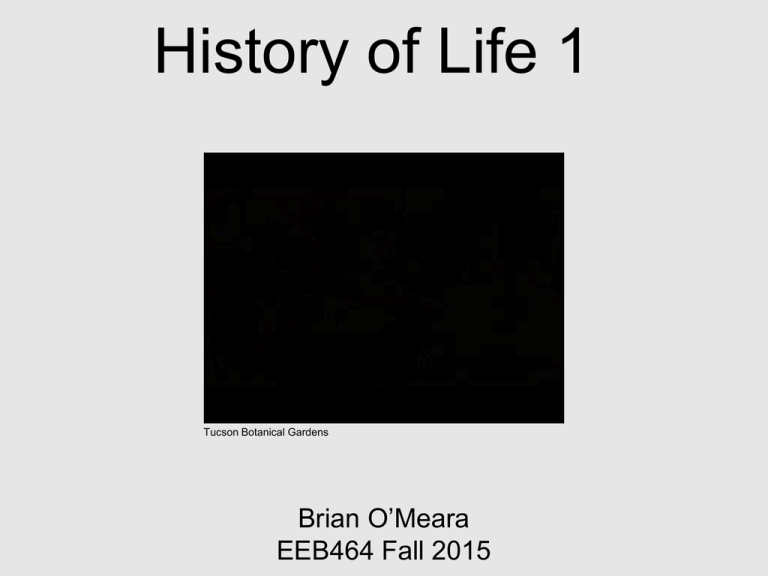
History of Life 1 Tucson Botanical Gardens Brian O’Meara EEB464 Fall 2015 Learning outcomes: • Get a deep perspective on time • Understand major events in earth history • Generate hypotheses regarding what happens after mass extinctions Big Bang 13.73 BYA First stars produce more complex elements, then (some) explode Borb Solar system (sun, planets) form 4.6 BYA Moon broken off from Earth, 4.53 BYA Ow! Heavy bombardment, 4.1 - 3.8 BYA Life evolves ~3.8 BYA Photosynthesis evolves somewhere 3.5 - 2.8 BYA H O H + O C O = Sugar + O O Great oxidation event 2.45 - 2.22 BYA H O H + O C O = Sugar + O O Huronian glaciation 3.2 - 2.4 BYA a long time passes Andree Valley Archaea+Eukaryotes and Eubacteria diverge Eukaryotes diverge from Archaea Life is still single-celled Bacteria Archaea Eukarya Circular chromosome Y Y N Histones with DNA N Y Y Flagella Spinning Spinning Waving Unicellular Y Y Varies Organelles ~N N Y http://www.youtube.com/watch?v=9w421z4fsOU a long time passes Andree Valley Archaea+Eukaryotes and Eubacteria diverge Eukaryotes diverge from Archaea Life is still single-celled Ediacaran fauna 0.63 BYA = 630 MYA Wikimedia commons Cambrian 542 MYA John Sibbick Wikimedia commons Permian-Triassic extinction 251 MYA Permian-Triassic extinction 251 MYA Permian-Triassic extinction 251 MYA KT (Cretaceous-Tertiary) extinction 65.5 MYA Brian Franczak Sun eventually becomes red giant, expands Franck et al. Causes and timing of future biosphere extinctions. Biogeosciences (2006) vol. 3 (1) pp. 85-92 Schröder and Smith. Distant future of the Sun and Earth revisited. Monthly Notices of the Royal Astronomical Society (2008) vol. 386 (1) pp. 155-163 Discussion: how might a major extinction like the one at the end of the Permian affect life?
